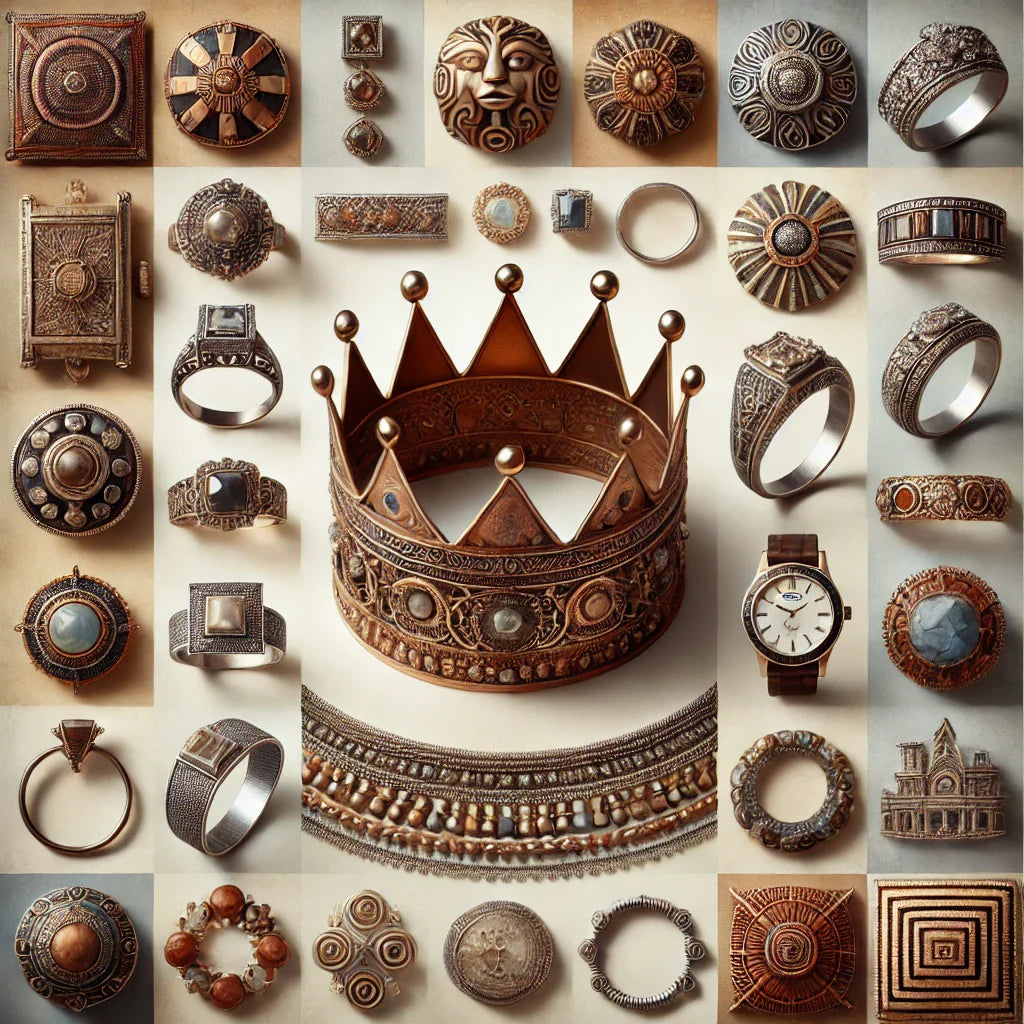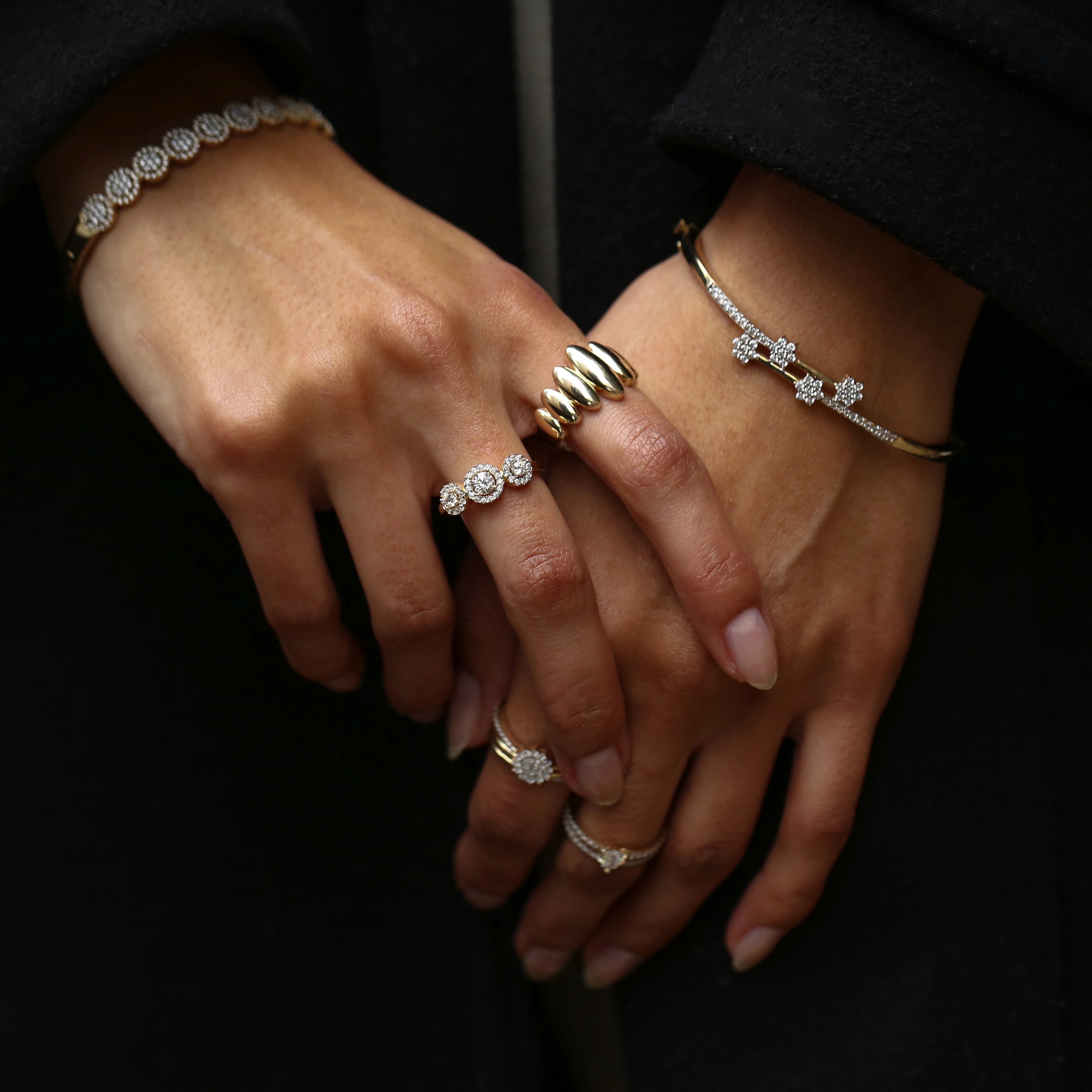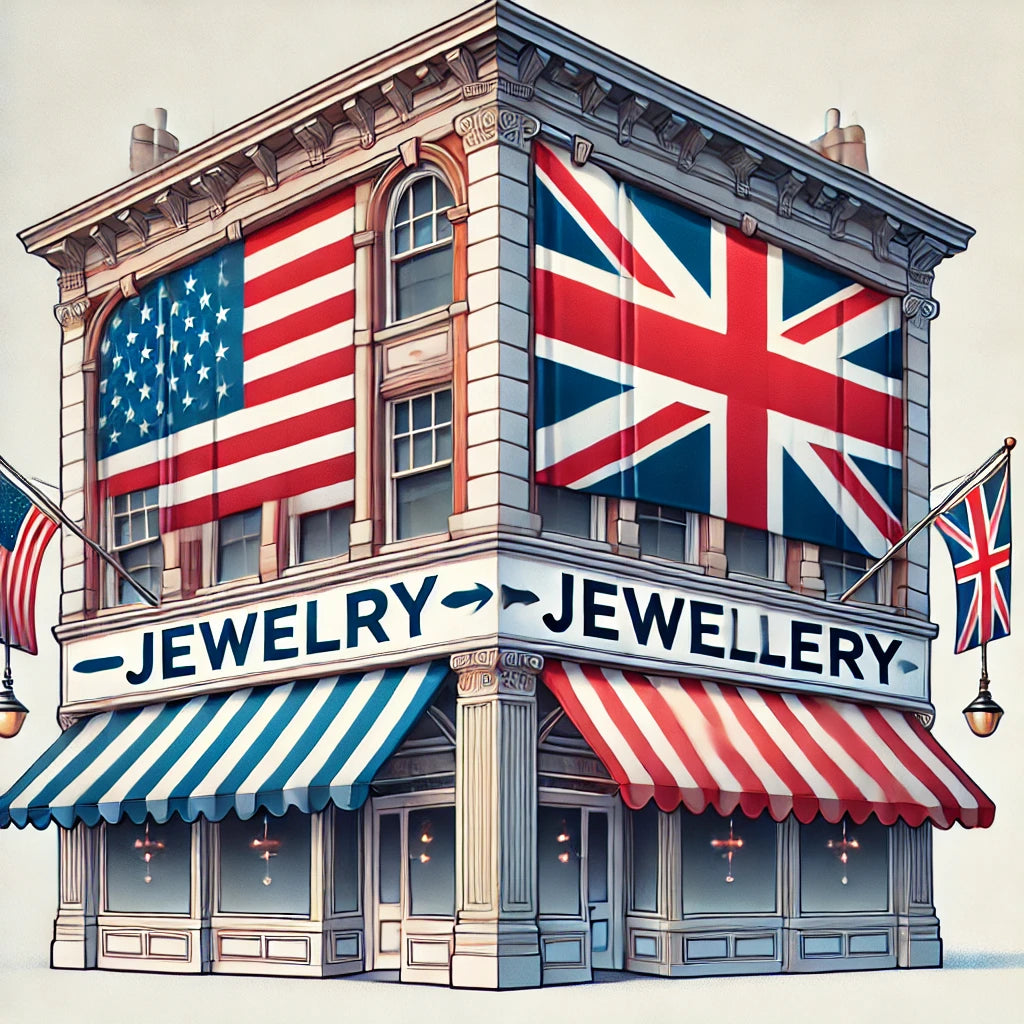Schmuck hat in der menschlichen Gesellschaft seit Jahrhunderten einen bedeutenden Stellenwert und dient mehr als nur als Schmuck. In verschiedenen Kulturen und historischen Epochen symbolisierte Schmuck sozialen Status, spielte eine entscheidende Rolle in Ritualen und Traditionen und diente als Form des persönlichen und kulturellen Ausdrucks. Darüber hinaus hatte er einen tiefgreifenden Einfluss auf Kunst und Design. In diesem Blogbeitrag erkunden wir die vielfältigen Rollen von Schmuck in unserem Leben.
Schmuck als Symbol des sozialen Status
Antike und königliche Bedeutung
Kronen und Zepter
Kronen und Zepter galten im Laufe der Geschichte als ultimative Symbole von Königtum und Macht. Könige, Königinnen und Kaiser schmückten sich mit diesen opulenten Schmuckstücken, die oft mit Edelsteinen und Metallen besetzt waren. Diese Gegenstände waren nicht nur Zeichen der Autorität, sondern auch Kunstwerke und spiegelten die Handwerkskunst ihrer Zeit wider.
Insignien und Erbstücke
Insignien, darunter zeremonielle Gewänder und Insignien, enthielten oft exquisite Schmuckstücke. Diese Gegenstände wurden als Erbstücke über Generationen weitergegeben und symbolisierten Herkunft und Erbe. Die Weitergabe dieser Stücke von einer Generation an die nächste stärkte die familiären Bindungen und die Kontinuität der Tradition.
Moderne Statussymbole
Luxusmarken und High-End-Stücke
In der heutigen Gesellschaft symbolisiert Schmuck nach wie vor sozialen Status, insbesondere durch Luxusmarken und hochwertige Stücke. Namen wie Cartier, Tiffany & Co. und Bulgari stehen für Reichtum und Prestige. Diese Marken kreieren exklusive Stücke, die nicht nur den finanziellen Status des Trägers, sondern auch seinen Geschmack und sein Urteilsvermögen widerspiegeln.
Einfluss von Prominenten und öffentliche Wahrnehmung
Prominente und Persönlichkeiten des öffentlichen Lebens haben einen erheblichen Einfluss auf Schmucktrends. Trägt eine berühmte Person ein bestimmtes Schmuckstück, ist es oft sehr begehrt. Dieses Phänomen verdeutlicht, wie Schmuck das soziale Ansehen einer Person steigern und die öffentliche Wahrnehmung beeinflussen kann.
Schmuck in Ritualen und Traditionen
Religiöse und spirituelle Verwendung
Ritual- und Zeremonienschmuck
In vielen Kulturen spielt Schmuck eine wichtige Rolle bei religiösen und spirituellen Ritualen. Schmuckstücke wie Rosenkränze, Gebetsketten und zeremonielle Halsketten werden bei verschiedenen Riten und Zeremonien verwendet und symbolisieren Glauben und Hingabe.
Schutzamulette und Talismane
Schmuck wurde auch als Schutzamulett und Talismane verwendet. Man glaubte, dass diese Stücke böse Geister abwehren und Glück bringen. Kulturen weltweit haben ihre eigenen Formen von Schutzschmuck, oft mit spiritueller Bedeutung.
Übergangsriten
Verlobungs- und Eheringe
Verlobungs- und Eheringe sind wohl die weltweit bekanntesten Symbole für Verbundenheit und Liebe. Sie symbolisieren wichtige Meilensteine im Leben und sind tief in kulturellen Traditionen verwurzelt.
Geschenke zum Erwachsenwerden
Schmuck wird in verschiedenen Kulturen oft als Geschenk zur Feier des Erwachsenwerdens verschenkt. Diese Stücke symbolisieren den Übergang von der Kindheit zum Erwachsenenalter und werden als Symbole dieser wichtigen Lebensphase geschätzt.
Schmuck als Ausdrucksform
Persönlicher Ausdruck
Individueller und maßgeschneiderter Schmuck
Mit individuellem und maßgeschneidertem Schmuck können Sie Ihren persönlichen Stil und Ihre Vorlieben zum Ausdruck bringen. Diese einzigartigen Stücke werden individuell an die Bedürfnisse des Trägers angepasst und verleihen ihm so eine persönliche und bedeutungsvolle Note.
Schmuck in Mode und persönlichem Stil
Schmuck spielt eine entscheidende Rolle in Mode und persönlichem Stil. Er ermöglicht es Menschen, ihre Identität auszudrücken, ihre Outfits zu ergänzen und modische Statements zu setzen. Schmucktrends entwickeln sich weiter und spiegeln umfassende Veränderungen in Mode und persönlichem Ausdruck wider.
Kulturelle Identität
Ethnischer und Stammesschmuck
Ethnischer und Stammesschmuck zeugt vom reichen kulturellen Erbe verschiedener Gemeinschaften. Diese Stücke werden oft mit traditionellen Techniken und Materialien handgefertigt und spiegeln die einzigartige Identität der Kultur wider, die sie repräsentieren.
Stücke des nationalen und regionalen Kulturerbes
Schmuck kann auch nationales und regionales Erbe symbolisieren. Diese Stücke enthalten oft Symbole und Motive, die für eine bestimmte Kultur von Bedeutung sind und deren Geschichte und Traditionen zelebrieren.
Einfluss von Schmuck auf Kunst und Design
Künstlerische Bewegungen
Jugendstil und Art Deco
Künstlerische Strömungen wie Jugendstil und Art Déco hatten einen bedeutenden Einfluss auf das Schmuckdesign. Sie führten neue Ästhetiken und Techniken ein und führten zu innovativen und ikonischen Schmuckstücken, die bis heute zeitgenössische Designer inspirieren.
Zeitgenössischer künstlerischer Schmuck
Heutzutage verschwimmen bei zeitgenössischem Kunstschmuck die Grenzen zwischen Kunst und Schmuck. Diese Stücke werden oft als tragbare Kunst angesehen und erweitern die Grenzen des traditionellen Schmuckdesigns.
Interkulturelle Einflüsse
Fusion im Schmuckdesign
Die Globalisierung hat dazu geführt, dass verschiedene kulturelle Einflüsse im Schmuckdesign verschmelzen. Diese Mischung aus Stilen und Techniken hat einzigartige und innovative Stücke hervorgebracht, die eine globalisierte Welt widerspiegeln.
Globale Trends und lokale Traditionen
Während globale Trends das Schmuckdesign beeinflussen, spielen lokale Traditionen weiterhin eine entscheidende Rolle. Designer lassen sich oft von ihrem kulturellen Erbe inspirieren, was zu zeitgenössischen und zugleich traditionellen Schmuckstücken führt.
Zusammenfassend lässt sich sagen, dass Schmuck viel mehr ist als nur ein Accessoire. Er ist ein starkes Symbol für sozialen Status, ein wichtiger Bestandteil von Ritualen und Traditionen, ein Mittel des persönlichen und kulturellen Ausdrucks und hat maßgeblichen Einfluss auf Kunst und Design. Das Verständnis der kulturellen Relevanz von Schmuck ermöglicht es uns, seine tiefere Bedeutung und seine Rolle in der menschlichen Gesellschaft zu verstehen.




